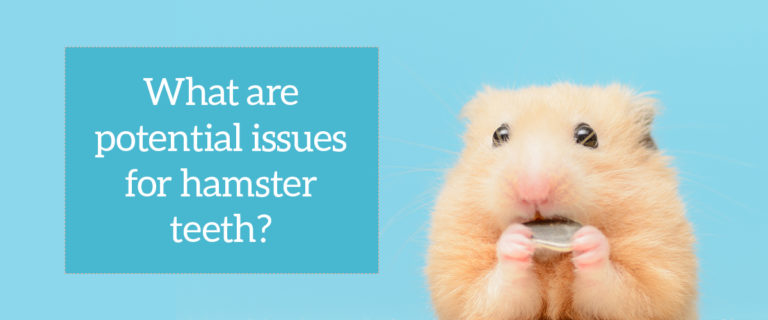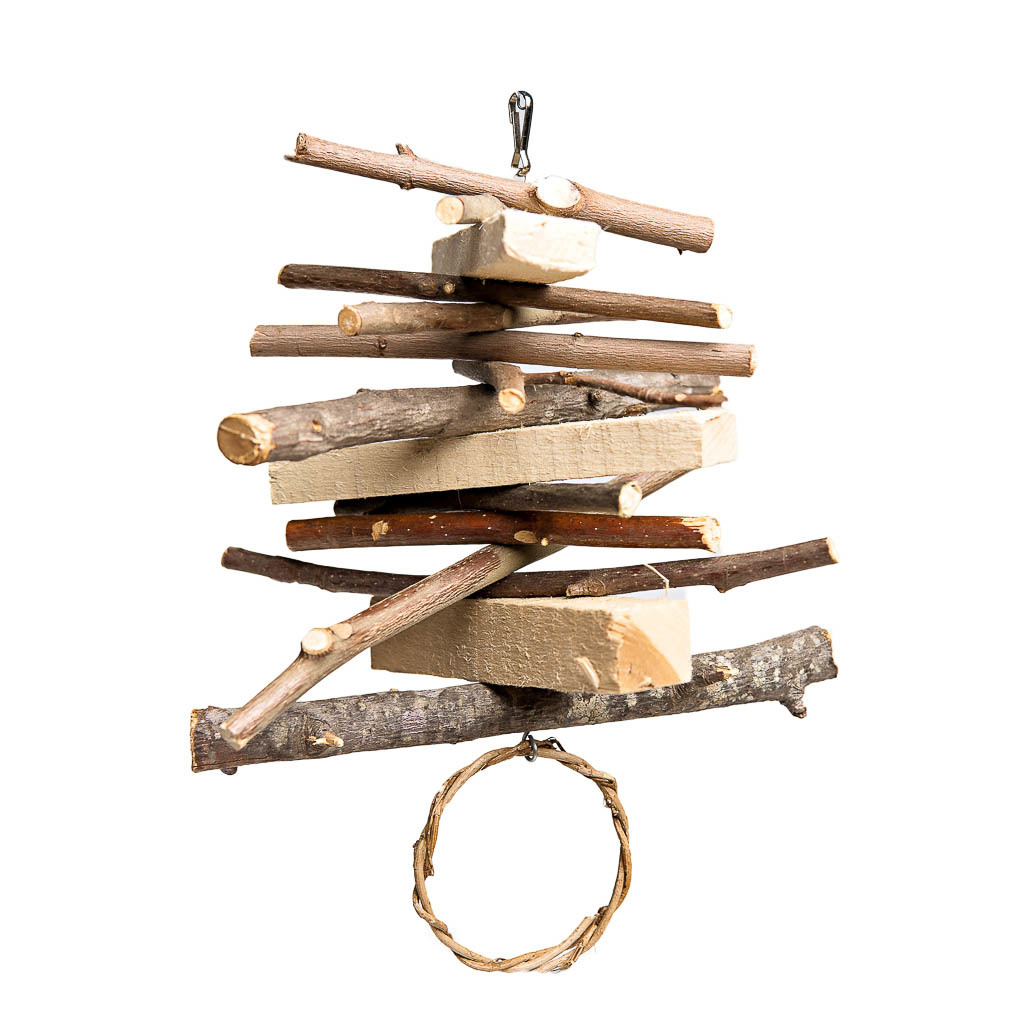Having and maintaining healthy teeth is essential to all species. While taking your animal to the the vet for dental work isn't fun, you can keep those visits to a minimum by taking care your pet’s teeth. Similar to rabbits and guinea pigs, hamster’s teeth never stop growing. However, constant growth doesn’t ensure healthy teeth. We’re going to explain potential issues for hamster teeth. And we’re going to share ways your hamster is telling you something is wrong with his teeth.
What Should Hamster Teeth Look Like?
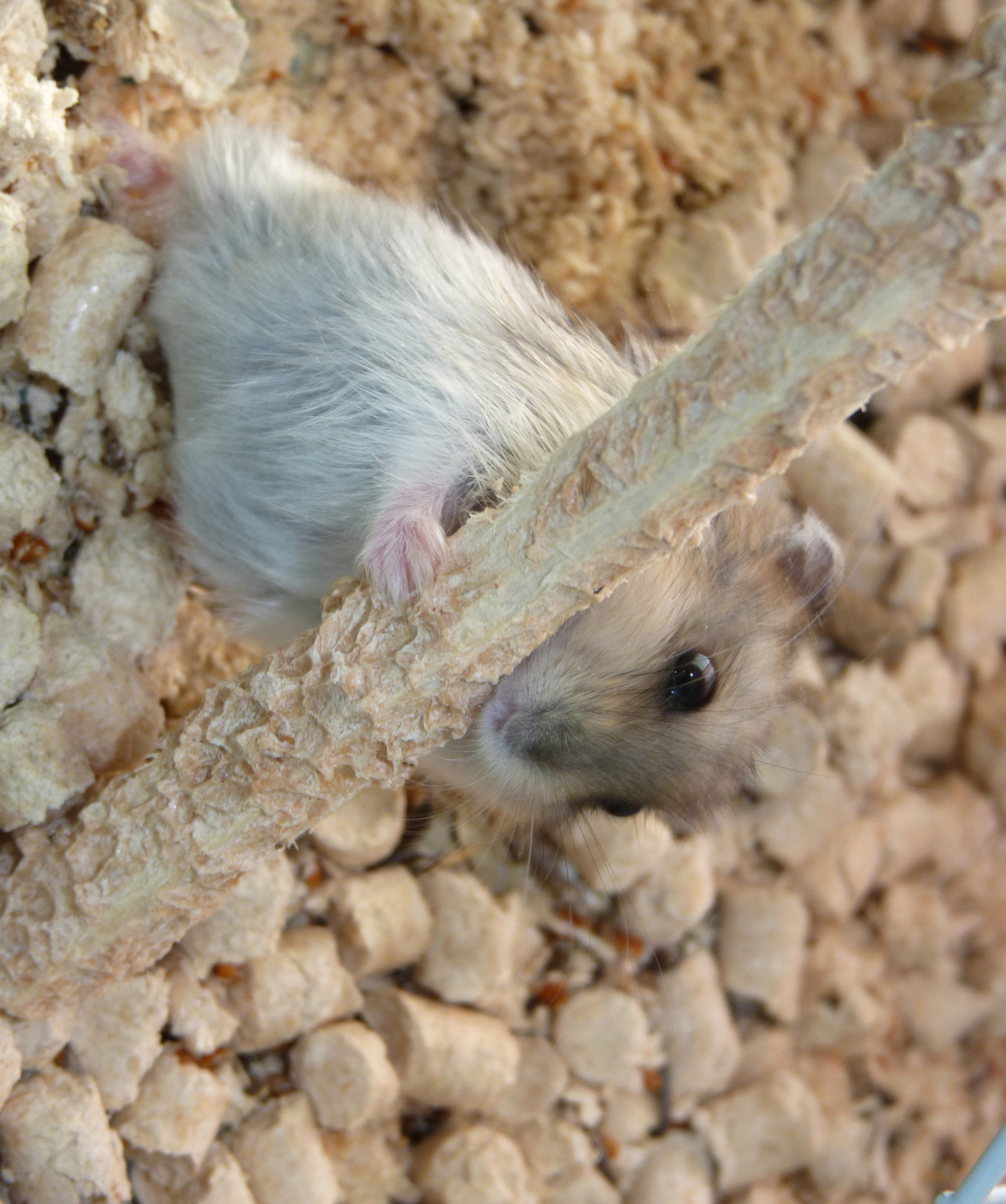
You probably already know hamsters are small rodents. Here’s a fun fact regarding the word “rodent.” In Latin, where the term "rodere" originated, it means "to gnaw." Anyone that's had a hamster knows they spend a lot of time gnawing and chewing.
It's so crucial for hammies to chomp on wood throughout the day. As we mentioned before, all of their teeth grow continuously. These types of teeth are called hyposondontal. While they look very long compared to other species, they’re even longer below the gum line.
The most effortless hamster teeth to spot are their upper and lower front incisor teeth. You'll see that they're covered in a yellow-orange enamel, which is entirely normal. If your teeth have that same hue, you’ve had one too many cheesy puffs, so back away from that bag!
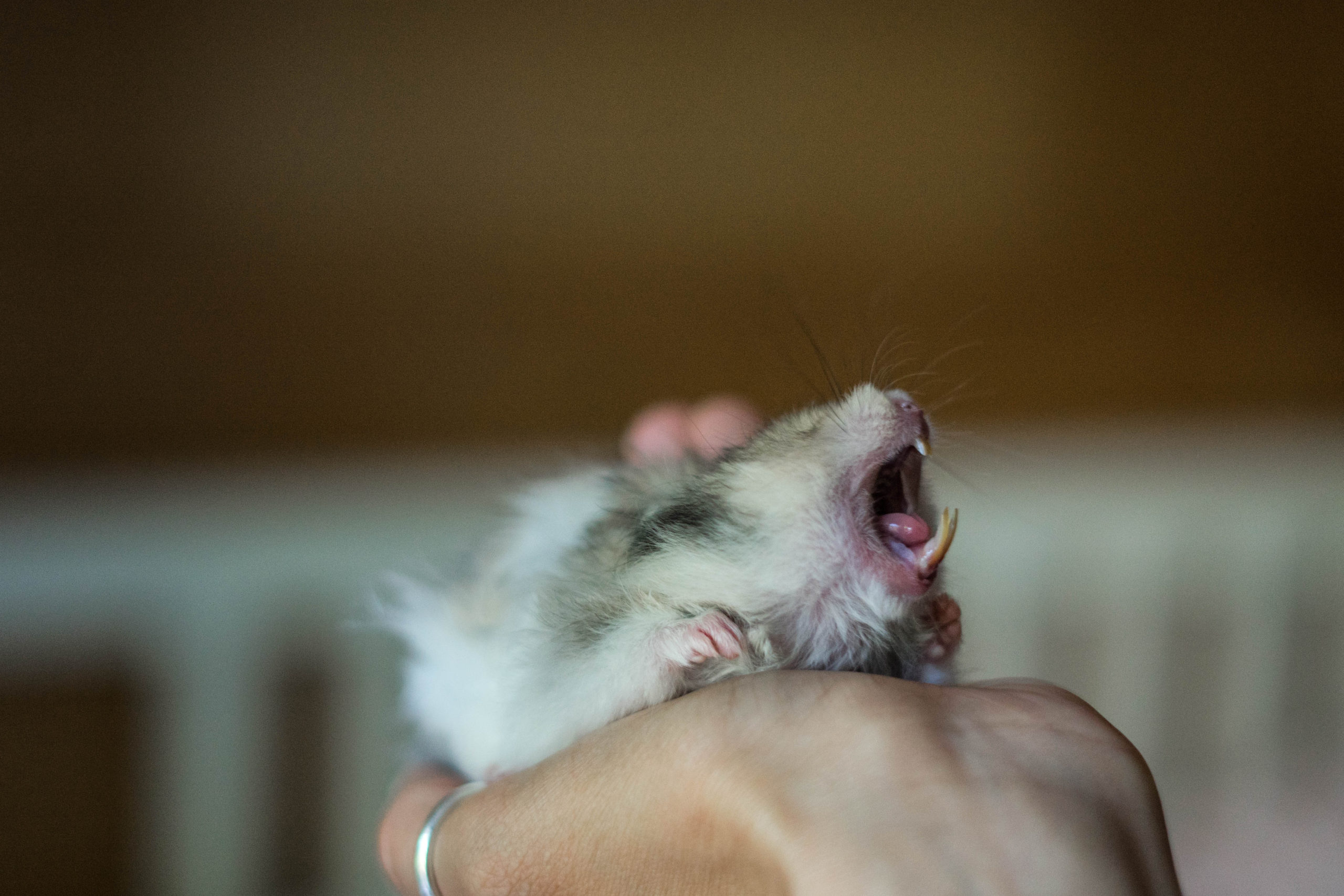
Chubby hamster cheeks make us squeeee, but they’re actually really useful, too. These food storage pouches, when full, can go all the way back to their shoulders. You'll see your hamster massage his cheeks to move the food into his mouth when he's ready to eat. Here's a true story: the author of this blog (me) acquired a hamster after confiscating him from one of her Air Force troops, who illegally kept him in her dorm room. Not knowing about the food pouches, took the hamster to the vet, thinking it had a tumor on one side 🤦🏻♀. Had Google existed, that vet visit wouldn’t have happened.
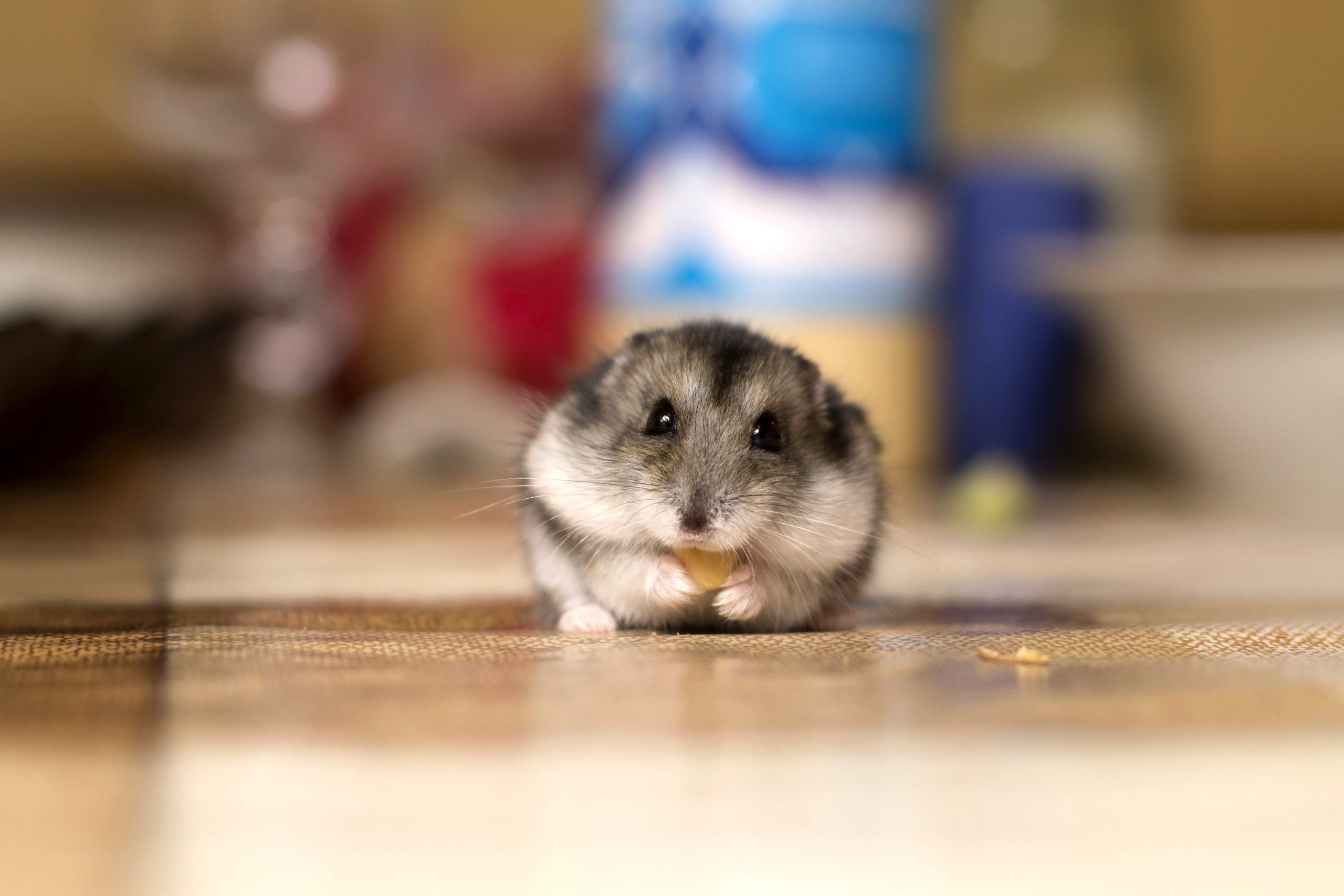
While not a tooth issue, the cheek pouches may become impacted if the hamster can't massage the food content and release it. The impaction can turn into an abscess that makes one or both sides of their cheeks swell. Additionally, if your hamster is too rough while massaging the pouch contents, the pouches can turn inside out and even protrude through the front of the mouth. This condition is painful and may keep them from eating properly.
Unhealthy Hamster Teeth
Hamster teeth issues can be broken down into 1. overgrown teeth, 2. infected teeth/gums, and 3. misshapen/broken teeth.
Overgrown Teeth
Your hamster's front teeth (incisors) are the easiest to see. If they become overgrown, you will see them outside of their lips. The incisors will curve and stick out between their lips. If they are excessively wild, they can get stuck on things or even grow into the gums, tongue, or roof of the mouth. If the teeth pierce the roof of the mouth, a hole will develop between the mouth and the nasal cavity. If this happens, you will see your hamster sneeze a lot and have nasal discharge.
The good news is the molar teeth, in the back of your hamster's mouth, rarely become overgrown despite the fact that they grow all the time. The molars are very difficult to see without sticking a speculum in the hamster's mouth. If there is an issue with the molars, your hamster will drool and have problems chewing and swallowing.
Infected Teeth/Gums
Just like in the cheek pouches, if food gets stuck in the molars, bacteria can grow. The second-order effects are infections in the teeth and gums from the bacteria. Symptoms of infected teeth and gums are difficulty eating, weight loss, swollen lower jaws, or swellings below or around their eyes. Also, your hammy may have bad breath from the infection.
Misshapen/Broken Teeth
If your hamster has overgrown teeth, as they hit each other, they can break off. You may also see them chewing on the bars of their enclosure. The teeth can break off as they’re chewing on things they shouldn’t be. Broken teeth are just as painful to hamsters as they are to humans, so keep an eye out.
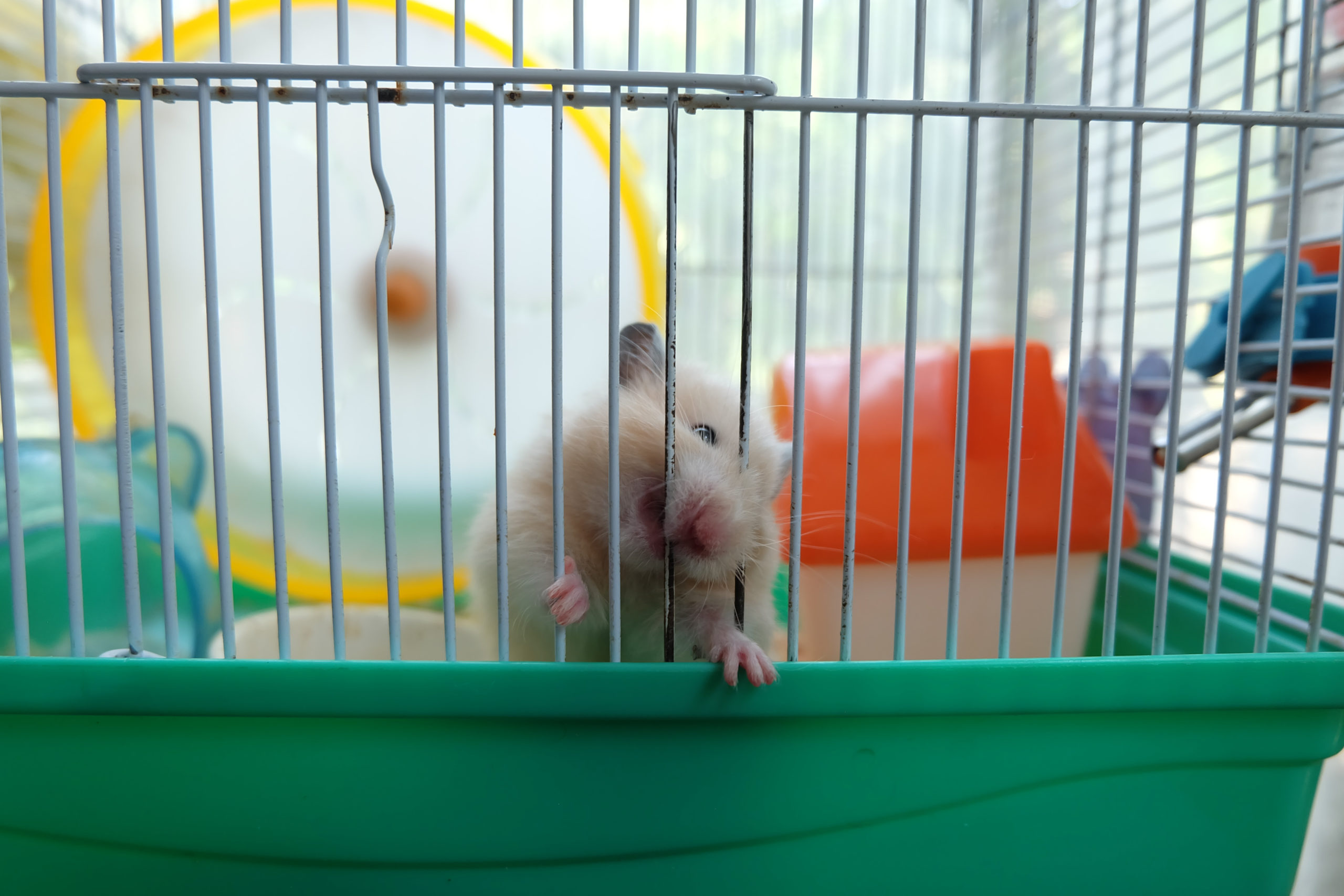
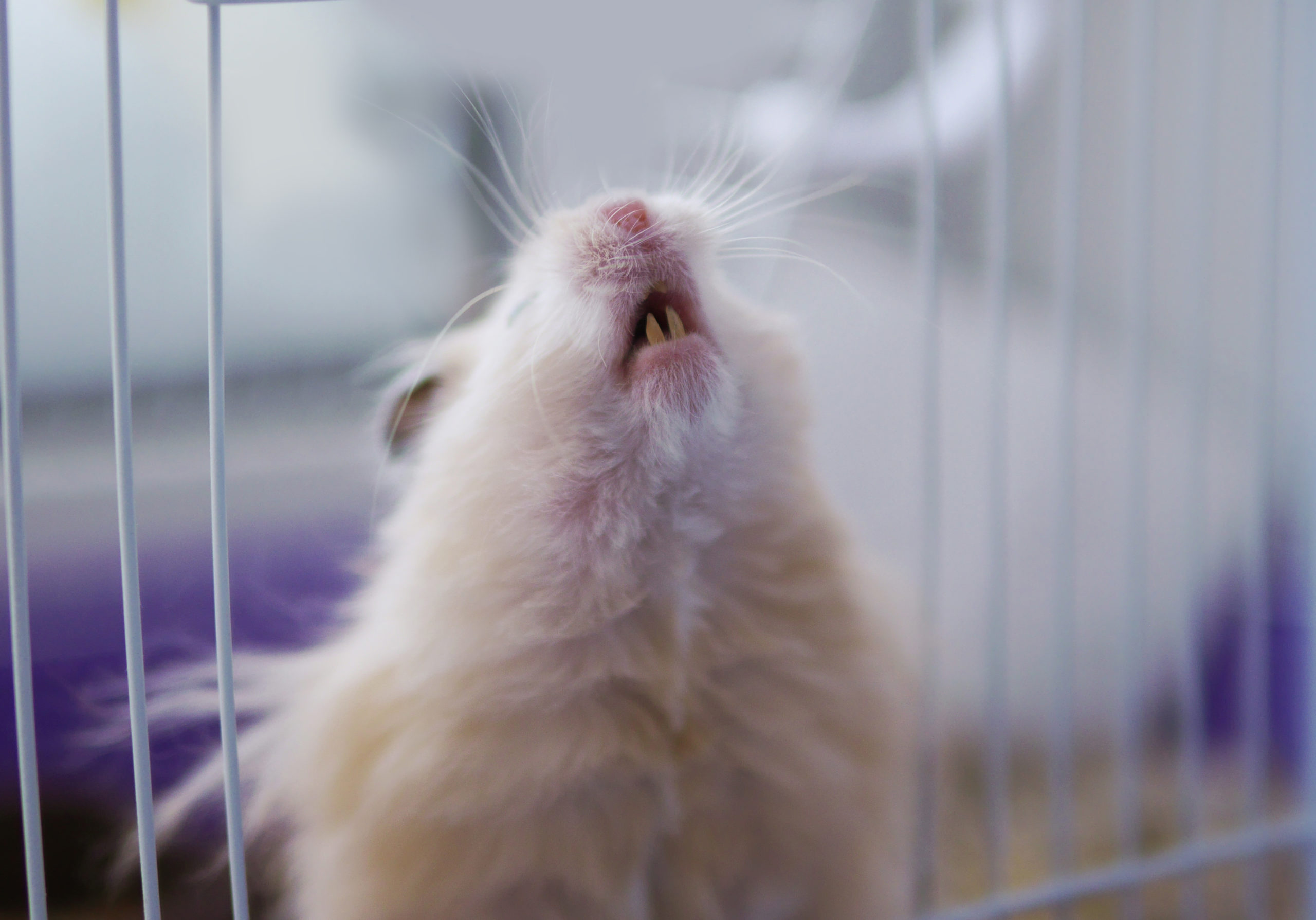
Once the front teeth break off, they may not grow back correctly or grow in crooked.
How to Keep Hamster Teeth Healthy
We recommend three ways to make sure your hamsters teeth stay healthy:
1. Daily Health Checks
As hamsters are prey animals, they are reluctant to show any signs of illness. Therefore, you should check them daily to make sure they're nice and healthy. Examples of things to check are:
- Are they eating normally?
- Are they pooping and peeing normally?
- Are there any unusual facial swellings or nasal discharge?
If anything seems off, schedule an appointment with your exotic vet right away. For more information on signs that your hamster is sick, please check our article on that topic.
2. Annual Exotic Vet Appointments
Just like us, hamsters need annual preventative care appointments with their exotic vet. If your vet notices dental issues during this visit, they can schedule a tooth trim for your sweet baby.
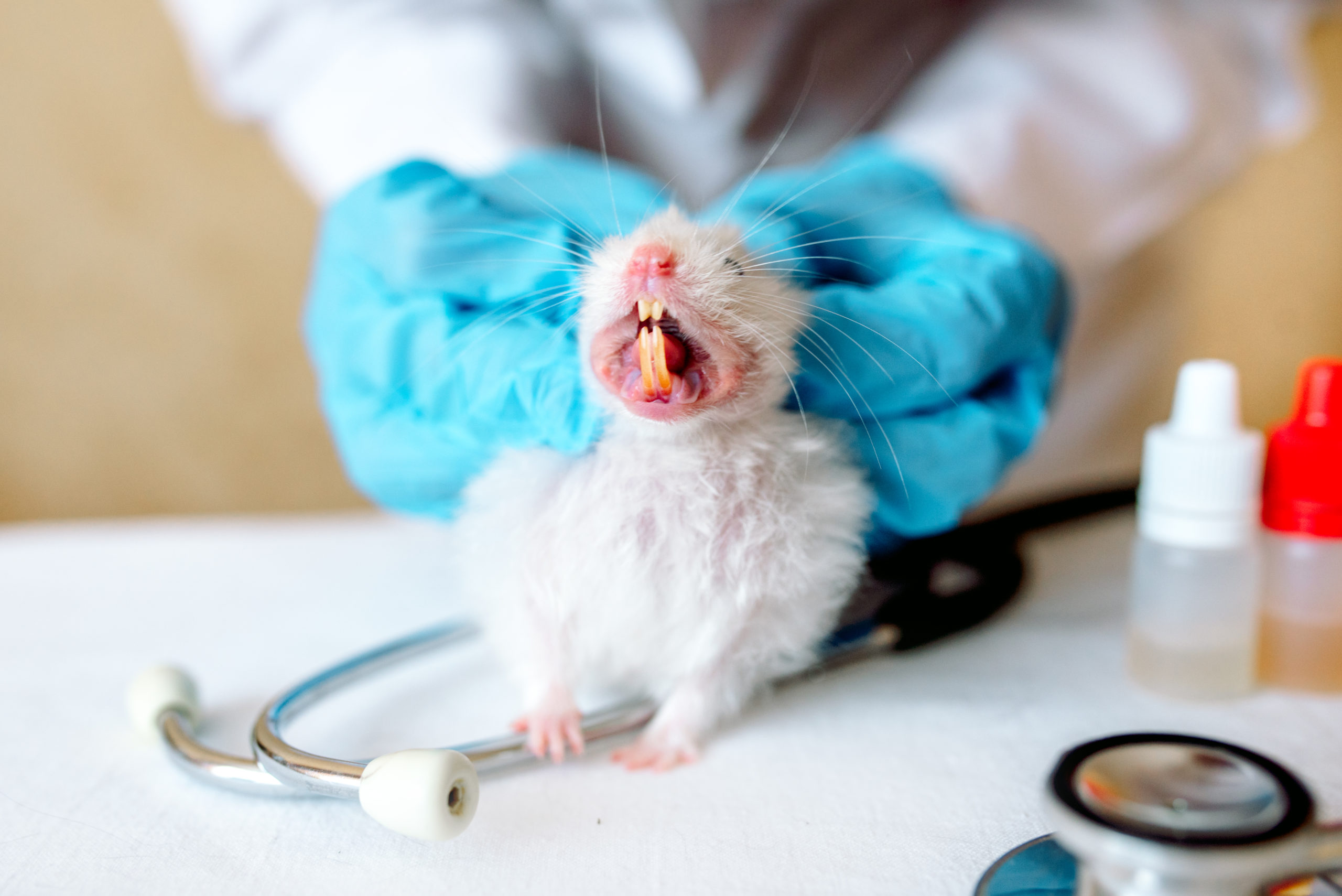
3. Hamster-Safe Items to Chew
Wood-based chew toys are the best way to help your hammy keep her teeth in tip-top shape. Small Pet Select has a vast assortment of natural toys and chews to help.
Finally, providing him with the correct diet combined with treats, and herbal blends especially for hamsters, will keep them busy munch munch munching and help prevent teeth and cheek problems.
Has your hamster had any teeth issues? Did they have any signs we didn’t mention? Did your vet recommend any other solutions? We’d love to hear them. Please share them on our socials or email them to hoomans@smallpetselect.com.



